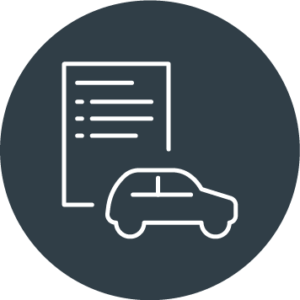Case Study - 2,500+ Company Car Entitled Fleet
Our analysis outlined a potential £1.24m savings pot for the customer and £2.22m total gross benefit for employees could be achieved if all our recommendations were followed. Keep reading to find out how.
The existing company car solution offered a Battery Electric Vehicle (BEV), a Plug-in Hybrid Electric Vehicle (PHEV) or employees could have a car allowance to source and maintain their own vehicle privately. The customer wanted to continue to offer low emission vehicles but be able to provide a wider and more varied choice, including petrol and self-charging hybrids for those who aren’t ready to go full electric just yet. The customer also wanted to enhance the purchasing power for its car benefit solutions by offering employees a higher spec car at a more cost-efficient price and improve customer service.
Overall, the customer wanted to provide a market leading employee benefit and any new solution needed to be flexible, agile, suitable for all employees and sustainable to the environment.

- There was no consistency between the financial cost to provide an employee with a company car versus an employee who took a car allowance - meaning the benefit might not be the same to every employee in the same job role who choose to enjoy their benefit differently.
- When employees opted for a more or less expensive car than they were entitled to, there was no clear link between the cost differentiation to the business and the amount of the employee contribution or rebate.
- The customer was missing out on tax efficiencies for providing a car allowance.
- General feedback from employees was that they found the existing structure limiting and experienced unsatisfactory customer service levels.
We recommended changes to the fleet structure which increased financial efficiencies, expanded vehicle choice, and ensured a consistent benefit across the job grade spectrum. The customer had job grades in place already in which similar job roles were banded together, each grade received an allowance and was set contract term to standardise the benefit and deliver it in the most tax efficient manner.
By implementing these efficiencies, we created a pool of savings, which the customer can distribute how it sees fit – the savings can be retained by the customer or split in any proportion between the business and its employees.
For the new car scheme, we worked with the customer to ensure the cost of the benefit to the business was fixed before the employees decided how they want to enjoy their benefit, so that no matter their choice, the business costs wouldn’t be impacted. Employees receive a set allowance and can select from one of three scheme options:

Salary Sacrifice Cars

Car Allowance

Employee Car Ownership Scheme (ECOS)
The implementation of this structure not only provided employees with a more tax efficient way to trade-up their vehicle benefit but can also create Class 1 National Insurance Contribution (NIC) savings for the customer. Any savings can then be distributed by the customer to meet the business goals – they can be retained by the customer or used to improve the employee benefit.
If an employee decides to trade-up and choose a more expensive vehicle, under this structure they can make more savings in comparison to their previous company car arrangement - as now they pay around 58%* of the increased vehicle costs, whereas under the old scheme it was 100% of the cost. Regardless of any trade-up, the cost to the customer remains static, as it’s separate to the lease costs and is based on the grade allowance.
As salary sacrifice is currently cost efficient for low emission cars - those emitting CO2 of 75g/km or less) - this option ticked the sustainability box for our customer.
*40% tax payers could pay more or less.
As the car is owned by the employee, if they drive business miles, they can claim tax-free Approved Mileage Allowance Payments (AMAP). After they’ve been paid fuel expenses, the remaining part of the AMAP is paid into CBL, to reduce the balance.
The new tax efficient structure also means the cost of delivering the allowance is reduced in comparison to normal payroll costs.
We calculated that the value of the tax relief received by the employee was less than the tax efficiency which could be realised if the AMAP was paid directly to the employee in lieu of a taxable cash allowance. The net cash amount was also re-benchmarked so it’s higher than the previous net allowance -so under the new scheme, most cash takers are better off.
ECOS typically works best for petrol and self-charging hybrids, so employees who aren't ready for full electric or simply have a preference can still have a tax efficient benefit with a traditional fuel vehicle.
Our customer allocates the set allowance towards the cost of the chosen vehicle, and then any trade-up or trade-down is paid or received by the employee.
Do you want a car scheme that has benefits including:








Get in Touch
Got a question? Want to know more about how we can help? Simply fill out the form and we’ll be in touch.
All Done
We’ll be in touch soon.